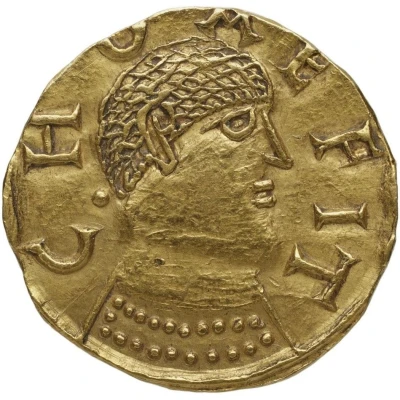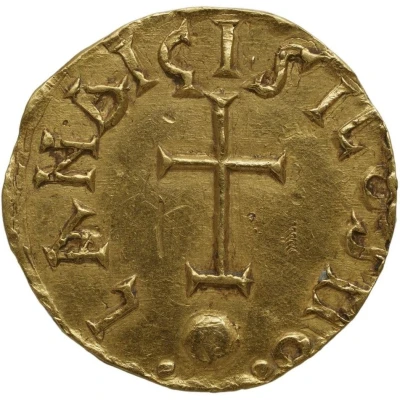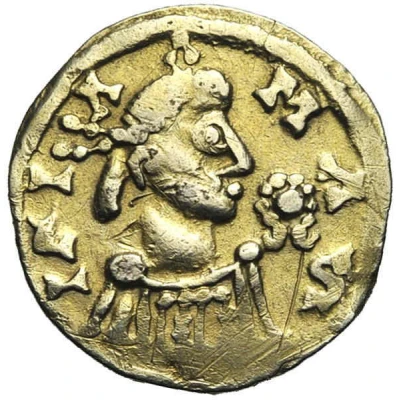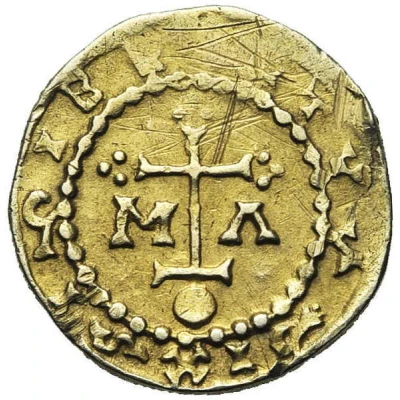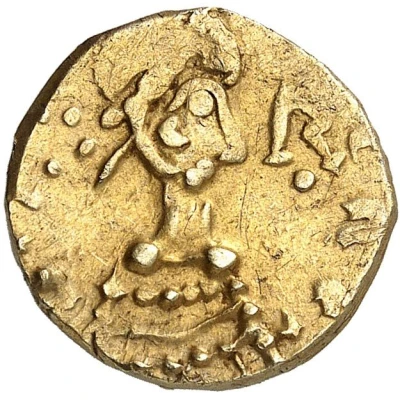
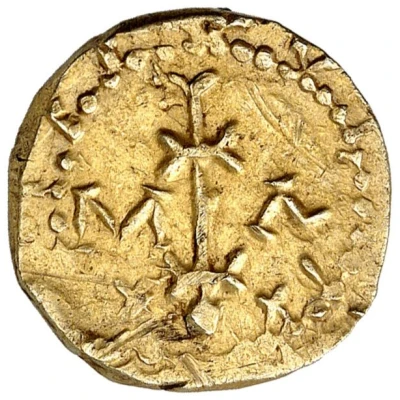

Sou d'or - Sigebert III Marseille
| Gold | 3.76 g | 17 mm |
| Issuer | Kingdom of Austrasia (Frankish Kingdoms) |
|---|---|
| King | Sigebert III (639-656) |
| Type | Standard circulation coin |
| Years | 634-656 |
| Value | 1 Solidus |
| Currency | Tremissis (476-670) |
| Composition | Gold |
| Weight | 3.76 g |
| Diameter | 17 mm |
| Shape | Round (irregular) |
| Technique | Hammered |
| Orientation | Variable alignment ↺ |
| Demonetized | Yes |
| Updated | 2024-10-10 |
| Numista | N#423500 |
|---|---|
| Rarity index | 100% |
Reverse
Latin cross above a globe. In the field, M-Λ, X-XI.
Script: Latin
Lettering: VICTVRIASEGI
Unabridged legend: Victoria augusti
Comment
The Roman solidus was traditionally divided into 24 siliques and the tremissis into 8 siliques. The various Germanic peoples who settled in the empire imitated the Roman and Byzantine solidi, while adopting a lighter standard. At the end of the 6th century, probably in 587, the masses of solidi and tremisses minted in the kingdom of the Franks were lowered by one eighth. Expressed in siliques, the value of the solidus was reduced from 24 to 21 siliques, and that of the tremissis from 8 to 7 siliques. The change is clearly indicated on coins minted in Marseille bearing the marks XXI and VII. These light solidi and tremissis imitate Constantinople issues, from Justin II to Heraclius. Under the reign of Clotaire II, the king's name replaced that of the emperor, and a further weakening was decided, with the solidus now struck at 20 siliques. This practice continued under the reigns of Dagobert I and his son Sigebert III, with successive weakening of the alloy.
Interesting fact
One interesting fact about the Sou d'or - Sigebert III (Marseille) coin is that it features a unique blend of Christian and pagan imagery. On one side, the coin depicts a cross, which symbolizes the Christian faith of the Frankish Kingdoms. On the other side, it features an image of a pagan deity, possibly Jupiter or Mars, which reflects the cultural influences of the pre-Christian societies of the region. This blending of religious symbols highlights the complex and dynamic nature of religious beliefs during the early Middle Ages.
